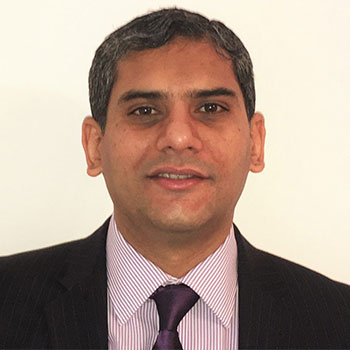What is a preauricular sinus?
A preauricular sinus is a congenital anomaly that appears as a small hole or pit near the ear, usually found just in front of the top of the ear, above the small bump called the tragus. These tiny openings are present at birth and are generally painless, often unnoticed. However, preauricular sinuses can become infected and need medical attention. While they are harmless, their potential to cause recurring infections makes understanding and managing them essential.
Embryology and development
The ear development is a fascinating and complex process. It starts with the formation of 6 mesenchymal mounds, known as the hillocks of His, which fuse to form the auricle, or outer ear. When this fusion is incomplete, it can result in a preauricular sinus. Although the exact cause of preauricular sinuses is unknown, genetic factors are believed to play a role.
Associated syndromes
Preauricular sinuses are sometimes associated with other congenital anomalies, most notably branchio-oto-renal syndrome (BOR) and oculo-auriculo-vertebral spectrum (OAVS). BOR is a genetic disorder characterised by branchial cleft anomalies, hearing loss and renal abnormalities. OAVS affects the development of the ear, eye and vertebrae. These associations suggest that a thorough medical evaluation is crucial for individuals with preauricular sinuses, as they may indicate underlying genetic conditions that require comprehensive management and treatment.
Symptoms and presentation
Preauricular sinuses can present with pain, swelling and discharge. These symptoms can sometimes mimic those of other conditions, making diagnosis challenging. Infected preauricular sinuses can be very uncomfortable and, in severe cases, can lead to abscess formation and cellulitis.
Please call to enquire about the price
Ways to payBefore surgery
Before preauricular sinus excision, you will need to see a consultant ENT surgeon for a thorough evaluation. Antibiotic treatment is often necessary for infected preauricular sinuses before surgery to control the infection and prevent complications. This evaluation will determine the best course of action and make sure you are fit for surgery.
Preparation for surgery
Before your surgery, your medical team will give you specific instructions to ensure a smooth and safe procedure. You may be asked to stop certain medications, such as blood thinners or anti-inflammatory drugs, that can increase the risk of bleeding during surgery. Tell your doctor about all the medicines, supplements and vitamins you are taking.
In some cases, you may be asked to follow dietary restrictions such as not eating or drinking anything after midnight the night before surgery. These precautions reduce the risk of complications during anaesthesia.
If the sinus is infected, your doctor may prescribe a course of antibiotics before surgery to reduce inflammation and prevent infection from spreading.
Your surgeon will go through all of this with you beforehand, so you know exactly what to expect and how to prepare. If you have any questions or concerns, now is the time to ask.
During surgery
The surgeon will make a small incision near the opening of the sinus, which is usually located just in front of the top of the ear, above the small bump called the tragus. From there, the surgeon will carefully dissect along the sinus tract, which can occasionally extend deeply or have multiple branches. Incomplete removal can increase the risk of recurrence.
To locate the full extent of the sinus tract, a special dye such as methylene blue may be used during the procedure. This improves visibility and ensures the entire tract is removed. In some cases, a thin surgical instrument may be used to gently explore the tract, but this can be more challenging if the area is inflamed due to infection.
The goal is to remove the entire sinus tract in one piece, thereby reducing the likelihood of the problem recurring. Surgeon ensures that the area is closed correctly and minimises any remaining space under the skin, which prevents infection and promotes healing.
After surgery
You will need to follow postoperative care instructions to ensure proper healing.
You will be advised to keep the surgical site clean and dry and avoid any trauma or pressure on the area. Regular follow-up appointments are crucial for monitoring the healing process and detecting any signs of residual inflammation or infection early. You may experience mild discomfort or swelling for several weeks after surgery, which usually resolves with proper care. Antibiotics may be prescribed after surgery if there was active infection or significant tissue dissection, but they are not always required for uncomplicated excisions.
Scar management techniques, such as gentle massage and the use of silicone gels or sheets, may be recommended to enhance the cosmetic outcome.
There is a small chance (5-10%) of recurrence, especially if the sinus tract is not completely removed. In such rare cases, revision surgery may be necessary.
Appointment and Treatment Plan
Initial Consultation
ENT surgeon evaluates your sinus and checks for infection. Antibiotics may be prescribed to settle any active inflammation before surgery.
Pre-operative Preparation
You’ll be given instructions on fasting, stopping certain meds, and managing infection. Share all current medications with your doctor.
Surgery
A small incision is made near the ear to remove the entire sinus tract. Special dye may be used to help locate and fully remove it. The area is then closed carefully.
Immediate Post-surgery Care
Keep the site clean and dry. Some swelling or discomfort is normal. Follow your surgeon’s care instructions closely.
Long-term Recovery
Attend follow-ups, manage scarring with massage or silicone gel, and watch for any signs of recurrence. Most cases heal well with low risk of return.
Experts
We are proud to provide patients with access to a wide range of clinicians, chosen specifically for their knowledge and reputation in their area of expertise. Our experts align with our values: putting you at the centre of your care and educating you on your options at each step of the journey. We encourage you to learn more about our clinicians and how they can help you below. As always, please contact our patient services team if you require any additional information.
We offer 3 ways to pay for your treatment
We exist to take the stress out of private healthcare.
Our payment options are designed to offer you easy access to our treatments and services. You can choose to pay on the day, spread the cost, or use your private medical insurance.
Our patient services team will guide you through the process, providing clear costs and support throughout your course of treatment so you can focus on the thing that matters most – your health.
Whether you pay in advance, spread the cost, or use your private medical insurance, rest assured you will be receiving exceptional care 365 days a year.
Pay in Advance
Even if you do not have medical insurance, you can still get quick and comprehensive access to private medical care.
We provide transparent pricing from your initial consultation to the completion of your treatment so you know where your stand, every step of the way.
We accept all major debit and credit cards, as well as Apple Pay for UK residents. Please note that we do not accept cash or cheques.
Pay monthly
Paying for your treatment at OSD Healthcare doesn’t need to mean settling the full cost in one go.
Many of our treatments have a pay monthly option that allows you to spread the cost of your treatment over 12 months with no credit checks required.
A minimum spend of £300 does apply. We’ll take your first payment upfront and then arrange a direct debit for your monthly payments thereafter. It’s that simple.
Pay using PMI
We are recognised by all major health insurance companies and with our extensive range of services, there are lots of benefits to using your insurance with us. Our patient services team is here to answer any questions you may have about using your private health insurance with us.
Please bring along your policy details including your scheme details, membership or policy number, expiry date and confirmation of eligibility to claim (i.e. your authorisation number). If you do not have these details with you, we will require payment from you on the day. Patients are liable for any amounts not settled by their insurer.
FAQs
Preauricular sinus excision is a surgical procedure to remove the sinus tract to prevent recurrent infections and complications. A standardised surgical approach is key to good outcomes and a low recurrence rate. This is usually done under general anaesthesia and involves an incision near the sinus opening. The supra-auricular approach, which involves a wider dissection above the ear, is associated with a lower recurrence rate in some studies and may be preferred in cases of recurrence or complexity.
Surgical excision is essential in managing preauricular sinus tracts. The goal is to remove the entire sinus tract to minimise the risk of recurrence.
Preauricular sinus surgery is generally safe if performed by an experienced surgeon. However, as with any surgery, there are risks involved such as infection, bleeding and damage to surrounding normal tissue. A thorough preoperative evaluation and following postoperative care instructions are crucial to minimise these risks. Use of absorbable sutures and meticulous surgical technique can further enhance safety and promote healing.
Recovery time for preauricular sinus surgery varies depending on the individual and the extent of surgery. Patients can usually return to their normal activities within one to two weeks. During the recovery period, follow the surgeon’s postoperative care instructions, attend follow-up appointments and monitor for any signs of infection or complications. Complete healing may take several weeks, and patients should refrain from activities that could strain the surgical site.
An infected preauricular pit is usually treated with oral antibiotics, and in some cases, incision and drainage may be necessary to relieve symptoms and control the infection. If the disease is recurrent or persistent, surgical intervention may be required to remove the sinus tract. Seek medical attention early to prevent complications such as abscess formation or cellulitis.
Complications of preauricular cyst can include recurrent infections, abscess formation and cellulitis if left untreated. Incomplete removal during surgical excision can lead to recurrence and may require revision surgery. Postoperative complications can also occur, such as infection or haematoma. Proper surgical technique and postoperative care are key to minimising these risks.
Symptoms of preauricular sinus infection can include pain, swelling, redness and discharge from the sinus opening. In some cases, patients may have fever or general malaise. These symptoms can mimic those of other conditions, so an accurate diagnosis is crucial. Early recognition and treatment are essential for preventing complications and effectively managing the infection.



